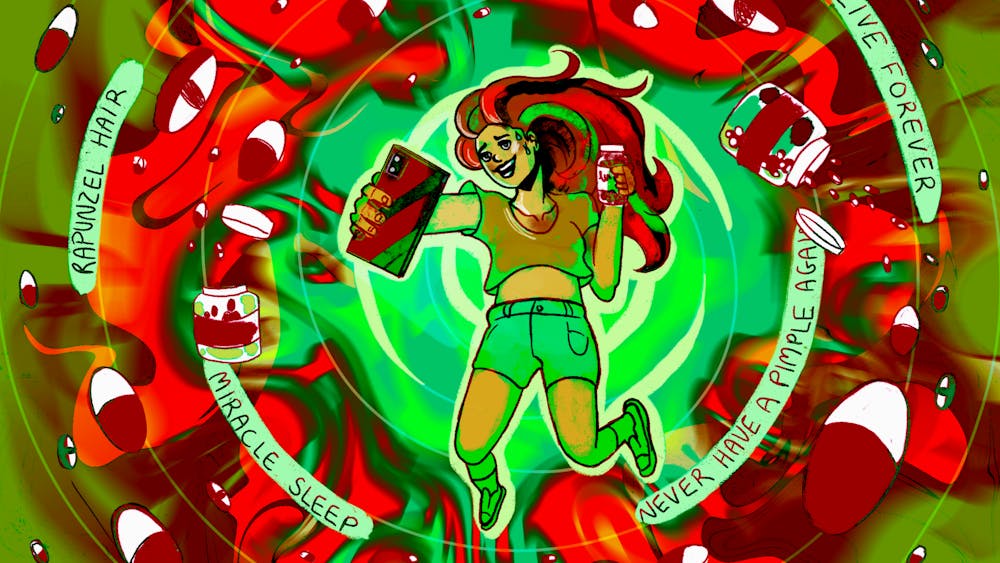While many people count calories and carbohydrates from the "Nutrition Facts" labels on food, I have found that reading a product's list of ingredients can, at times, be even more telling about its nutritional value. \nDuring one of my recent excursions at Marsh, I realized that the overwhelming majority of sweet foods don't contain sugar; rather, high-fructose corn syrup is the primary sweetening agent. High-fructose corn syrup is basically corn syrup on steroids. The high concentration of fructose makes the corn syrup doubly sweet, and doubly unhealthy.\nWhile research is still being conducted as to the health detriments of high-fructose corn syrup, many scientists are concluding that this sweetener could be a key player in the nation's obesity epidemic. "Fructose is more readily metabolized into fat," argues Peter Havel, Ph.D., a nutritionist from the University of California at Davis, in a recent Men's Health Magazine. When a person consumes carbohydrates, insulin is released to provide proper storage and distribution of the food energy and to suppress the person's appetite. Another hormone -- leptin -- is also stimulated to perform similar tasks and regulate the metabolism. \nAccording to Havel, "Fructose doesn't stimulate insulin and therefore doesn't increase the production of leptin." Conclusion: you can consume large quantities of foods that are high in high-fructose corn syrup and never feel full. Basically, the empty calories from the high-fructose corn syrup make a clear dash for your waistline. What's troubling is that many of our most common food items are loaded with this stuff (soda, frozen yogurt, popsicles, fruit juice and applesauce). How on earth did we get ourselves into this mess? \nIn the early 1970s, Japanese scientists developed a way to derive an inexpensive sweetener from corn. It didn't take long before the American food industry started to incorporate high-fructose corn syrup into the manufacturing of its products. In fact, just a generation later, sugar has now become a scant ingredient in most of our commercial food and consumption of high-fructose corn syrup has skyrocketed.\nIn 1970, the average American consumed about a half pound of high-fructose corn syrup each year; by 2000, that number had soared above 63 pounds. In that same time span, yearly soda consumption doubled from 25 gallons per person to 50 gallons. \nMany Americans would probably argue that "greedy" corporate moguls in the food industry are getting richer as Americans get drunk (and fat) off high-fructose corn syrup, but there's more to the story. Since 1981, the U.S. government, through a price support system, has consistently set the price of sugar at about three times the world market price. The intention is to help out farmers with a guaranteed income; sadly, this policy is aiding a select group yet hurting millions and millions of people. Because of price supports and limited imports, food manufacturers are forced to use high-fructose corn syrup or -- as some American companies have done -- move production to other countries where they can get free-market prices for sugar.\nBecause of the artificially high price of sugar, an oversupply of the crop has occurred. To combat this, the U.S. Department of Agriculture has bought the excess sugar and stored it in warehouses with rents of more than $1 million a month. What could possibly warrant such an asinine move? In 2000, the sugar farmers contributed $13 million to political campaigns and committees.\nAs we near the 2004 election, the sugar lobby will continue to make bribes with political candidates. I say it's about time we challenge our elected officials. They deserved to be asked, "Are you going to be America's next sugar daddy?" \nIn my opinion, any candidate who can continue to be a slave to our current sugar program is certainly unfit for office.
High fructose bribery
Get stories like this in your inbox
Subscribe





